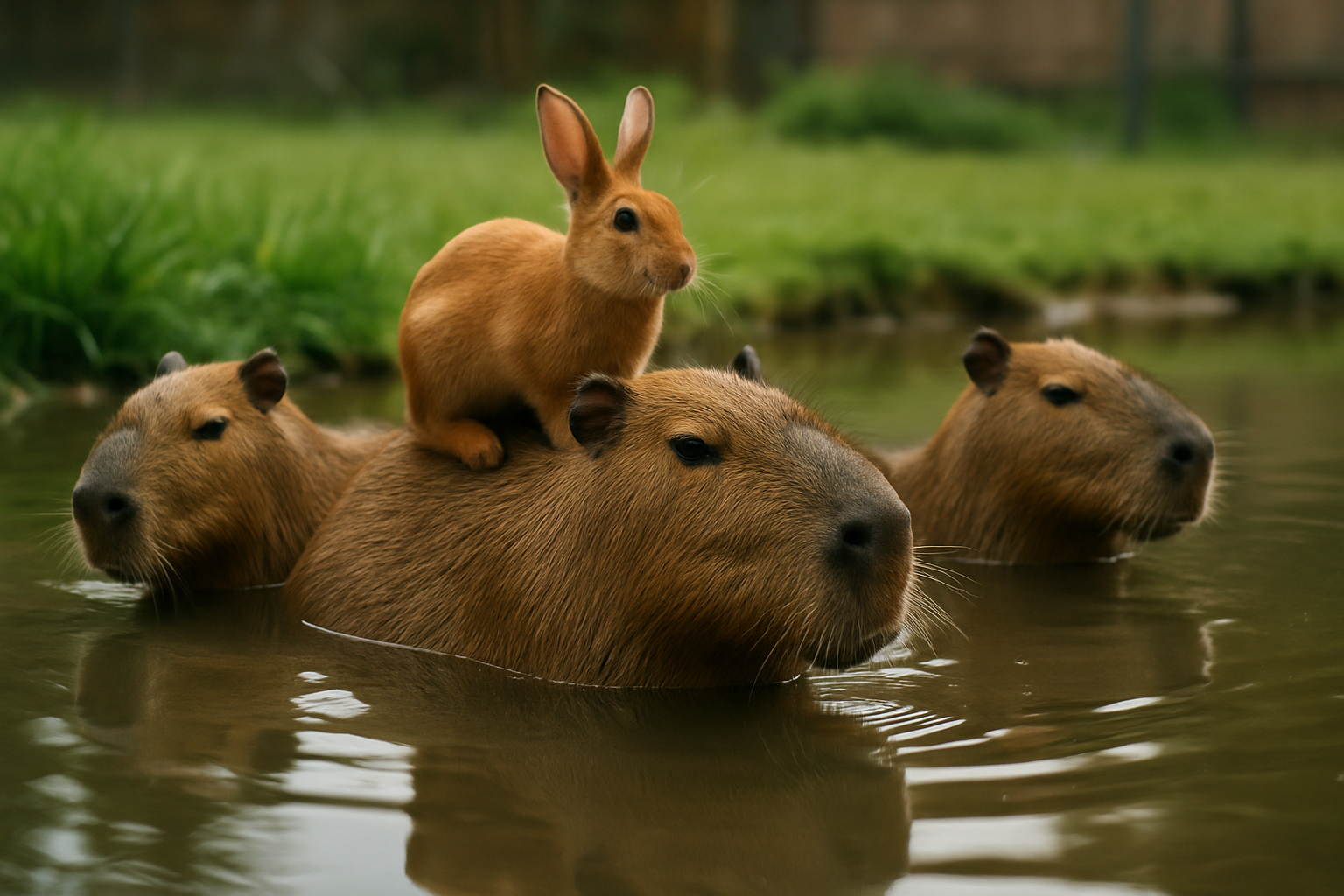The Enigmatic World of Capybara Companionship
In recent years, an unexpected contender has emerged in the realm of exotic pets, captivating animal enthusiasts and social media alike. The capybara, the world's largest rodent, has found itself at the center of a growing trend in unconventional pet ownership. This article delves into the fascinating world of capybara companionship, exploring the challenges, joys, and ethical considerations surrounding these charismatic creatures as domestic pets.

The Rise of Capybara Popularity
The surge in capybara popularity can be traced back to the early 2010s when social media platforms began showcasing these lovable creatures in various settings. Videos of capybaras lounging in hot springs, interacting with other animals, and even participating in human activities went viral, sparking widespread interest in these gentle giants.
As their online presence grew, so did the curiosity surrounding capybara ownership. Animal enthusiasts and exotic pet collectors began exploring the possibility of keeping capybaras as pets, leading to a gradual increase in captive breeding programs and specialized care facilities.
Legal and Ethical Considerations
While the idea of owning a capybara may seem appealing, potential owners must navigate a complex landscape of legal and ethical considerations. In many countries and regions, capybara ownership is heavily regulated or outright prohibited due to concerns about animal welfare, ecological impact, and public safety.
Even in areas where capybara ownership is permitted, prospective owners must obtain specialized licenses and permits. These regulations often require extensive documentation, proof of appropriate housing facilities, and demonstrated knowledge of capybara care. The process can be both time-consuming and costly, serving as a deterrent to impulsive pet purchases.
The Challenges of Capybara Care
Caring for a capybara as a pet presents unique challenges that potential owners must carefully consider. These semi-aquatic rodents have specific environmental needs that can be difficult to replicate in a domestic setting.
Capybaras require ample space to roam, including a large water source for swimming and bathing. A typical enclosure should be at least 12 feet by 20 feet, with a pool deep enough for the animal to fully submerge. This spatial requirement alone makes capybara ownership impractical for many households.
Additionally, capybaras have complex dietary needs. In the wild, they are herbivores that graze on grasses, aquatic plants, and fruits. Replicating this diet in captivity requires careful planning and often involves supplementing with specialized feeds and vitamins. The cost of maintaining a proper capybara diet can be substantial, with estimates ranging from $50 to $100 per month.
Social Needs and Bonding
One of the most compelling aspects of capybara companionship is their highly social nature. In the wild, capybaras live in large groups, and this social behavior translates to their interactions with humans and other animals in captivity.
Capybaras form strong bonds with their caretakers and can be affectionate and responsive pets. They often enjoy physical contact, such as petting and grooming, and may seek out interaction with their human companions. This social nature, however, also means that capybaras can become stressed or depressed if left alone for extended periods.
Many experienced capybara owners recommend keeping these animals in pairs or small groups to meet their social needs. This requirement further complicates the logistics and expenses associated with capybara ownership.
Health and Veterinary Care
Maintaining the health of a pet capybara presents its own set of challenges. Finding a veterinarian with experience in treating exotic rodents can be difficult, and regular check-ups and treatments can be costly. Capybaras are susceptible to various health issues, including dental problems, parasitic infections, and respiratory illnesses.
Preventative care, such as regular teeth trimming and parasite control, is essential for keeping capybaras healthy in captivity. Owners must be prepared to invest significant time and resources into their pet’s healthcare, with annual veterinary costs potentially reaching several thousand dollars.
The Impact on Capybara Conservation
As interest in capybara pets grows, concerns have arisen about the potential impact on wild populations. While most pet capybaras are bred in captivity, increased demand could potentially fuel illegal wildlife trade or disrupt conservation efforts in their native habitats.
Conservation organizations and wildlife experts emphasize the importance of supporting capybara populations in their natural environments rather than promoting them as pets. Many argue that the complex needs of these animals are best met in their native ecosystems, where they play crucial roles in maintaining ecological balance.
The Future of Capybara Companionship
As the trend of capybara pets continues to evolve, it raises important questions about the ethics of exotic pet ownership and the responsibilities of human caretakers. While these charismatic creatures undoubtedly offer a unique and rewarding companionship experience, the challenges and complexities involved in their care cannot be overstated.
For those captivated by capybaras, alternatives to pet ownership exist. Supporting reputable wildlife sanctuaries, participating in eco-tourism that promotes capybara conservation, or sponsoring capybara protection programs can provide meaningful ways to connect with these remarkable animals without the ethical and practical challenges of keeping them as pets.
As we navigate the fascinating world of capybara companionship, it is crucial to prioritize the well-being of these gentle giants and consider the broader implications of our choices on wildlife conservation and animal welfare.





